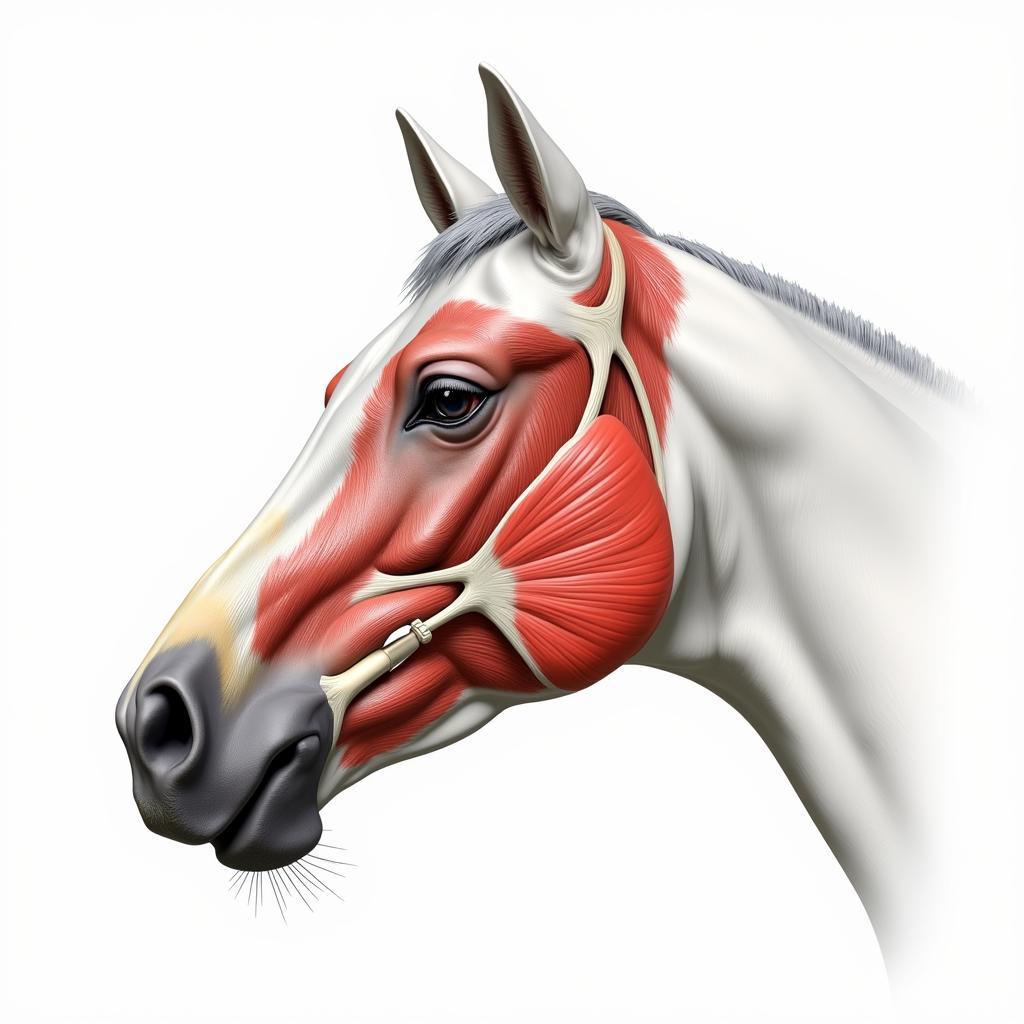The horse cheek, a seemingly simple area of the horse’s head, plays a crucial role in their communication, comfort, and overall well-being. Understanding its anatomy, recognizing signs of discomfort, and choosing appropriate cheek pieces for horses are essential for any horse owner. This comprehensive guide delves into the intricacies of the horse cheek, providing valuable insights for optimal horse care.
Anatomy of the Horse Cheek
The horse cheek is located on the sides of the face, between the eyes and the muzzle. It’s a complex network of muscles, nerves, and bones that contribute to the horse’s ability to chew, communicate, and respond to various stimuli. The masseter muscle, a key component of the cheek, is responsible for the powerful grinding action necessary for processing forage. Beneath the skin lie sensitive nerves that connect to the horse’s sensory system. Understanding this intricate structure is crucial for recognizing potential problems and ensuring proper care.
 Horse Cheek Anatomy Diagram
Horse Cheek Anatomy Diagram
Signs of Discomfort in the Horse Cheek
Horses are masters of subtle communication. Recognizing signs of cheek discomfort can be challenging but crucial for their welfare. Look for subtle cues like head tossing, resistance to the bit, excessive salivation, or reluctance to eat. These can indicate issues ranging from poorly fitting cheek pieces on horses to dental problems or even nerve damage.
“Early detection of cheek discomfort is key,” says renowned equine veterinarian Dr. Amelia Hernandez. “Ignoring subtle signs can lead to more serious problems down the line, affecting the horse’s performance and overall health.”
Choosing the Right Cheek Pieces for Your Horse
Cheek pieces horse are an essential part of the bridle and play a significant role in how the bit functions. Different cheek pieces exert varying pressures and control, impacting the horse’s responsiveness and comfort. Choosing the correct cheek pieces depends on the horse’s temperament, training level, and the discipline involved. For instance, full cheek snaffles offer more lateral control and are often used for young or inexperienced horses. Loose ring snaffles, on the other hand, allow for more independent movement of the bit.
“The choice of cheek piece can significantly impact the horse’s communication and performance,” explains master horseman, John O’Malley. “Selecting the appropriate cheek piece requires careful consideration of the individual horse’s needs and the rider’s experience.”
Caring for the Horse Cheek
Regular grooming and inspection of the horse cheek are vital for maintaining its health. Gently cleaning the area with a soft cloth can help remove dirt and debris. Regularly checking for any cuts, abrasions, or swelling is essential. If you notice anything unusual, consult with your veterinarian.
Conclusion
The horse cheek is more than just a part of the horse’s face; it’s a window into their well-being. Understanding its anatomy, recognizing signs of discomfort, and selecting the right cheek pieces for horses are crucial aspects of responsible horse ownership. By paying attention to these details, we can ensure our equine partners remain comfortable, healthy, and able to perform at their best.
FAQs
- What are the most common signs of cheek discomfort in horses?
- How often should I check my horse’s cheek for any abnormalities?
- What are the different types of cheek pieces available?
- How do I choose the right cheek piece for my horse?
- What should I do if I notice a wound or swelling on my horse’s cheek?
- Can dental problems cause cheek discomfort in horses?
- How can I prevent cheek injuries in my horse?
Need help with a break away horse halter? Contact us! Phone: 0772127271, Email: [email protected] or visit us at QGM2+WX2, Vị Trung, Vị Thuỷ, Hậu Giang, Việt Nam. We have a 24/7 customer support team.